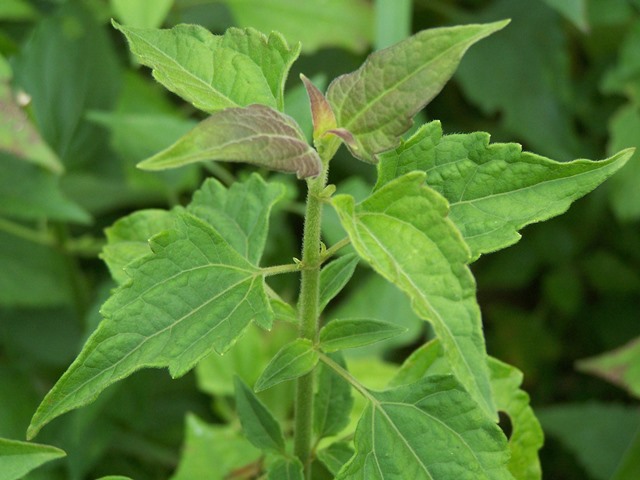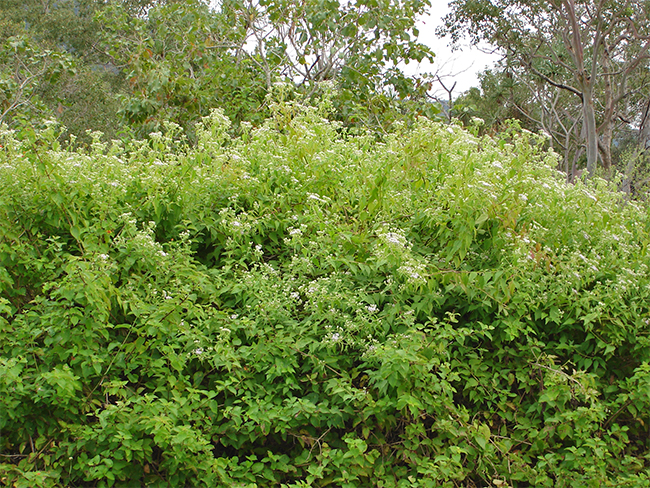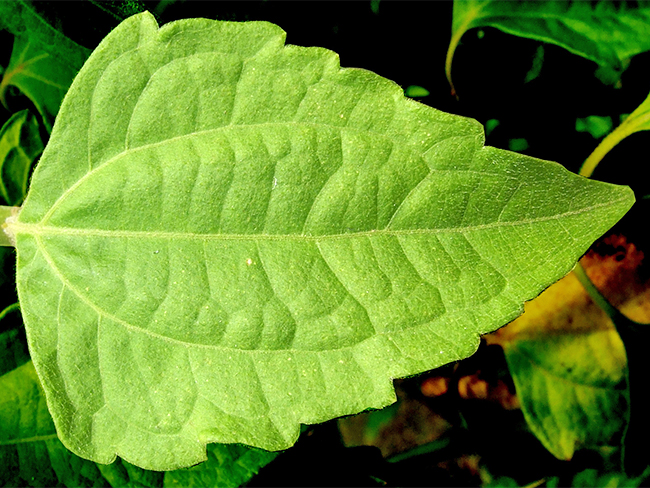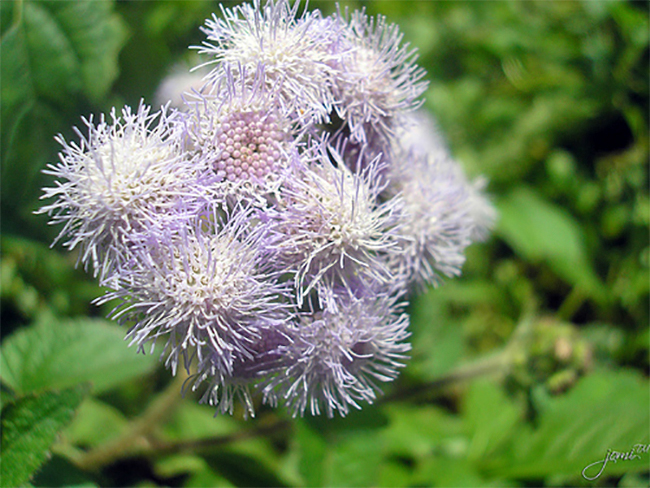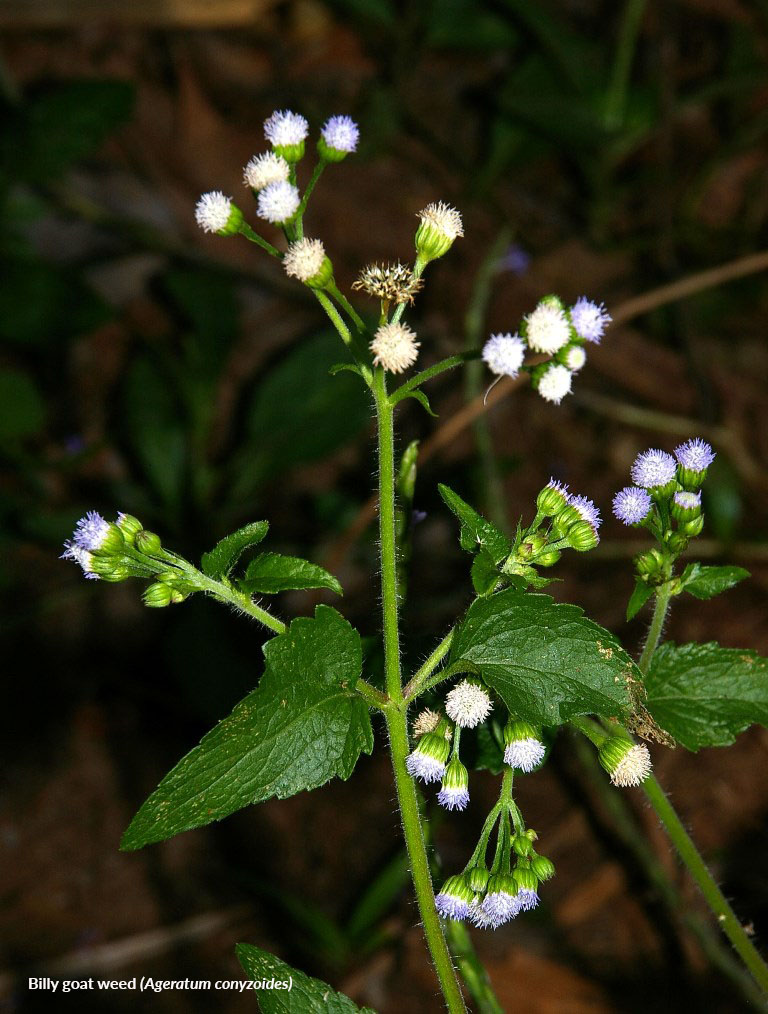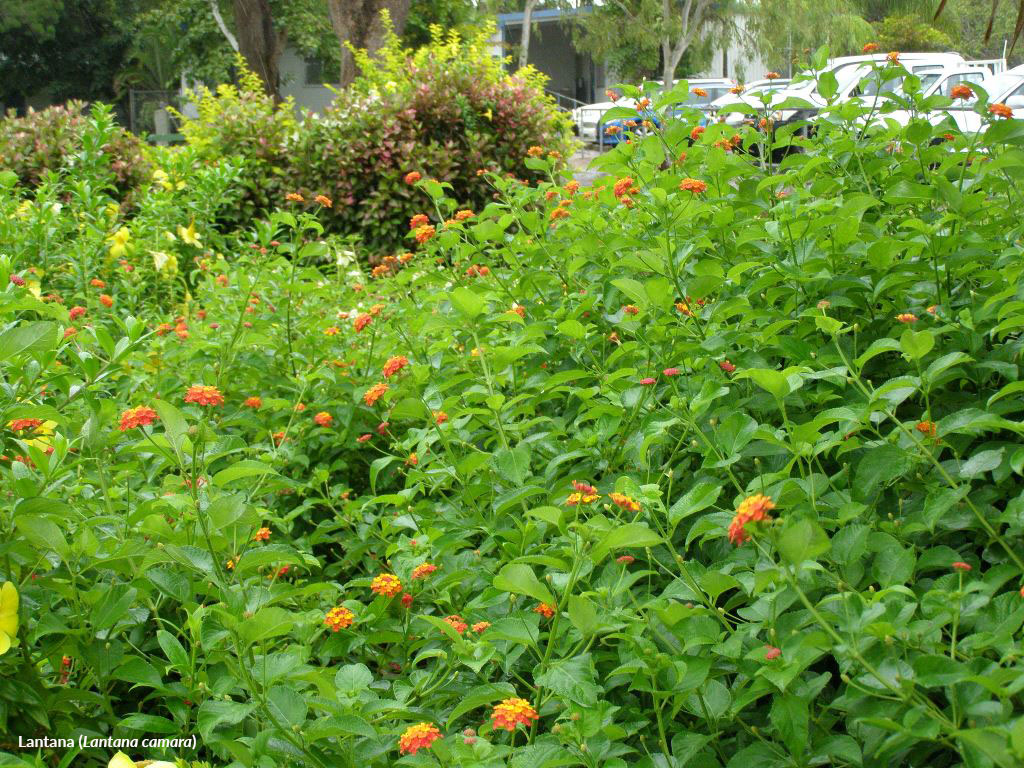Siam weed
Scientific name: Chromolaena odorata
Declaration status: Class B
Alert
A Siam weed infestation was detected in the Top End of the Northern Territory (NT) for the first time in July 2019.
Siam weed is serious and weed management officers are assisting the landholders with control and eradication.
If you have seen it or think you have it on your property, report Siam weed.
You should not try to control Siam weed without contacting the Weed Management Branch first.
A control effort that is poorly performed or not followed up can help to spread the weed and increase the problem.
Siam weed has a statutory weed management plan that outlines the legal requirements for control. Get the weed management plan.
To see how the plan was developed, get the discussion paper.
Siam weed (also known as 'pitchforking weed') is native to Central and South America.
It has become a serious weed in Africa, South East Asia, Papua New Guinea and in North Queensland.
Siam weed was first found in Australia in 1994 at a grazing property near Tully in Queensland. Eradication was not successful.
For more information get the:
Impact
Siam weed can have all of the following impacts:
- smothers, invades and outcompetes native vegetation
- invades and outcompetes pastures and crops
- major fire hazard in the dry season
- toxic to livestock
- causes skin problems and asthma to allergy-prone people.
Identification
You should use this as a guide. There may be other plants or weeds that look similar.
Siam weed has the following features:
- perennial shrub or vine up to 3m or
- up to 20m when climbing vegetation
- forms dense thickets
- leaves and side branches grow in opposite pairs
- leaves are soft, hairy and are roughly triangular-shaped with:
- distinctive 'pitchfork' three vein pattern
- toothed margins
- a strong smell when crushed
- stems are soft but the base of the shrub is woody
- flowers are:
- tubular
- white to pale pink or purple
- around 10mm long in clusters of 10 to 35 at the ends of the branches
- seeds are brown to black, are 4mm to 5mm long with a parachute of white to brown hairs.
Credit: Queensland Government
View a 3D interactive model of this weed below.
© Regional NSW through NSW DPI Invasive Species Biosecurity
Model created by Rachel Klyve
You can use the NT WeedMate app to help you report sightings of the weed. For more information, go to the Department of Lands, Planning and Environment (DLPE) website.
To find out more, get the Siam weed note on the DLPE website.
If you are unsure, contact the Weed Management Branch.
Similar looking plants
The following plant species look similar to Siam weed:
Billy goat weed (Ageratum conyzoides)
When young, Siam weed may be confused with billy goat weed.
Billy goat weed can be distinguished by its shorter growth habit (to 1m), shorter flower projections and roughly egg-shaped leaves rather than triangular.
Lantana (Lantana camara)
Mature plants show similar growth habits to lantana but lantana can be readily distinguished by its red and orange flowers.
Control
If you think you may have seen Siam weed, or have this weed on your property, don't attempt to control it.
You must immediately get assistance. You can either:
- contact the Weed Management Branch or
- report Siam weed.
Spread
Siam weed seeds can easily attach to humans, animals and machinery.
It can be spread by:
- wind
- vehicles
- animals
- water
- humans.
Spread prevention
If you travel overseas in areas affected by Siam weed, for example, Indonesia, Philippines, Timor-Leste or Papua New Guinea, make sure you don’t transport Siam weed seeds.
Vehicles and produce coming from areas in Queensland that are affected by Siam weed should be checked and cleaned before entering the NT and at individual properties.
Wash down areas should be closely monitored for Siam weed plants.
Give feedback about this page.
Share this page:
URL copied!
